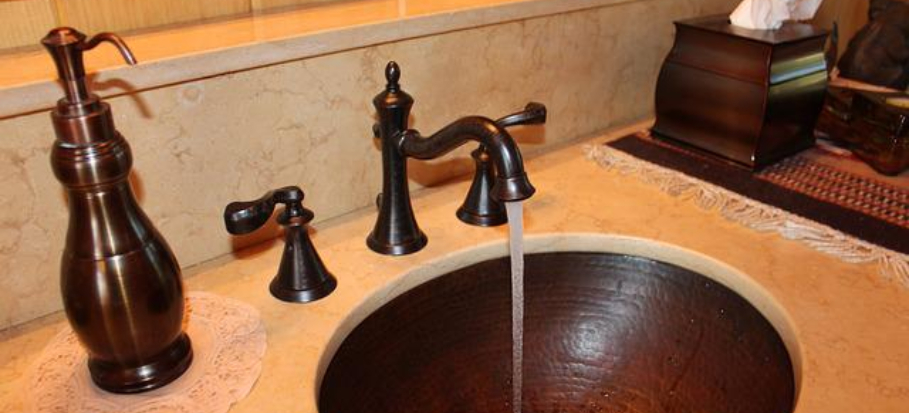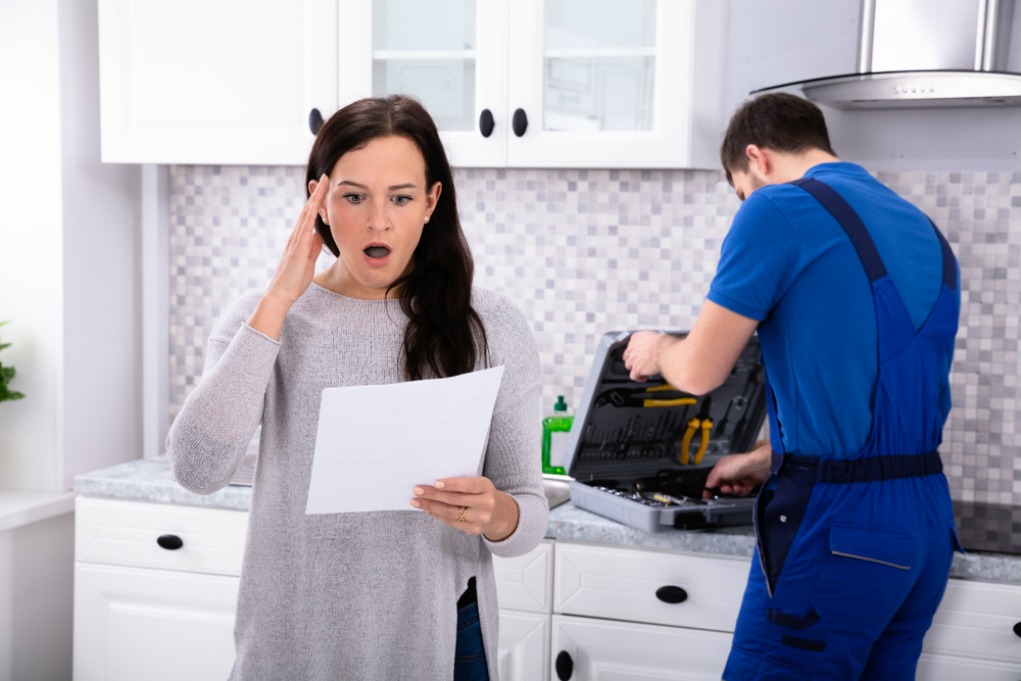Tips to Dealing with Plumbing Problems in Older Homes
Tips to Dealing with Plumbing Problems in Older Homes
Blog Article
Do you find yourself trying to find facts and techniques around Common Plumbing Problems in Older Homes?

Older homes often include appeal, character, and background, yet they can also bring a host of pipes issues. Whether you're handling maturing pipes, low tide pressure, or leakages, recognizing exactly how to resolve these common issues is important to keeping a secure and practical home. In this overview, we'll explore the regular pipes obstacles faced by older homes and offer practical remedies to maintain your plumbing in top form.
Comprehending Typical Pipes Issues
Aging Pipes
One of the most usual issues in older homes is aging pipes. Depending upon the age in which your home was constructed, the pipelines could be made from materials that have degraded gradually, such as galvanized steel, cast iron, or even lead. These products can wear away, become fragile, or create leaks, leading to water damage and prospective carcinogen.
Water Top Quality Testing
Older pipelines can influence the quality of your water. Conduct a water quality examination to look for contaminants such as lead, corrosion, or other pollutants that may be introduced by maturing pipelines.
Solutions for Typical Plumbing Issues
Replacing Aging Pipelines
If your home has old, degrading pipelines, take into consideration changing them with modern-day products like copper or PEX. This can be a significant investment, but it will certainly prevent future issues and enhance the safety and security and reliability of your plumbing system.
Dealing With Low Water Pressure
To repair low tide stress, beginning by cleansing or replacing old components and getting rid of mineral buildup in the pipes. If the issue lingers, it may be needed to replace areas of corroded pipelines.
Fixing and Replacing Dripping Pipelines
For little leaks, you can use pipeline clamps or epoxy putty as a short-lived repair. Nevertheless, it's best to change dripping pipelines completely to prevent more damages.
Upgrading Fixtures
Updating old fixtures to contemporary, water-efficient versions can enhance your home's plumbing performance and lower water consumption. Look for fixtures with the WaterSense tag for the very best efficiency.
Handling Pipeline Deterioration
If your pipelines are worn away, changing them with corrosion-resistant products like copper, PVC, or PEX is the very best solution. Regular inspections and water quality upkeep can aid stop additionally deterioration.
Low Tide Stress
If you're experiencing low water pressure, maybe as a result of natural resources, rust inside the pipelines, or old components that are no longer functioning successfully. This can be a significant hassle, especially in areas like showers and sinks.
Leaking Pipelines
Leakages are another constant concern in older homes, commonly triggered by corroded or worn-out pipelines. Even small leakages can result in significant water damage, mold and mildew development, and enhanced water bills otherwise dealt with promptly.
Obsolete Components
Out-of-date pipes components such as faucets, commodes, and showerheads not only look old yet might likewise be less effective, prone to leakages, or incompatible with modern-day plumbing criteria.
Pipeline Rust
Corrosion is an usual issue in older pipelines, particularly those made from galvanized steel or actors iron. Corroded pipelines can restrict water circulation, cause staining, and ultimately lead to leaks or pipeline bursts.
Analyzing the Condition of Your Plumbing
Checking Visible Pipes
Begin by evaluating any kind of visible pipes in your home, such as those in cellars, crawl spaces, or under sinks. Search for indicators of corrosion, leaks, or corrosion, which can suggest underlying issues.
Looking for Leaks
Look for leakages by evaluating locations around faucets, commodes, and under sinks. You can also monitor your water meter before and after a period of no water use to spot surprise leakages.
When to Call an Expert
While some plumbing issues can be taken care of with do it yourself options, there are times when it's ideal to call a specialist. If you're managing major leaks, substantial deterioration, or are unclear regarding the problem of your pipes, a certified plumbing can provide expert evaluation and repair service.
Preventive Upkeep Tips
Routine Assessments
Consistently examine your plumbing system for indicators of deterioration. Capturing concerns early can stop costly repair services down the line.
Water Stress Law
Guarantee your water pressure is within the advised range to avoid stressing your pipes and fixtures. A plumbing technician can mount a stress regulatory authority if required.
Water Top Quality Maintenance
Mount water filters or conditioners if your water quality is poor. This can protect your pipes and components from damage caused by tough water or impurities.
Aggressive Pipe Substitute
If your home has very old pipelines, take into consideration positive substitute before major concerns develop. This can conserve you from emergency repair services and water damages.
Conclusion
Managing plumbing issues in older homes needs a combination of alertness, preventive maintenance, and timely upgrades. By understanding the usual obstacles and knowing when to seek expert aid, you can guarantee your pipes system stays practical and dependable for years to come.
Common Plumbing Issues in Older Homes and How to Fix Them
Owning an older home in Australia comes with its unique charm and a set of challenges, especially when it comes to plumbing. The Sunshine Coast has many older properties that can harbour plumbing problems that aren t just inconvenient but potentially costly. Here s a look at some common plumbing issues in older homes and expert advice on how to handle them.
Outdated Piping Materials
Many older homes were built with galvanised steel, cast iron, or even lead pipes, materials that are far from ideal by today s standards. Galvanised pipes are prone to corrosion and clogging, while lead pipes pose serious health risks.
How to Fix:
Replacing old pipes is a job for a professional. Upgrading to copper or PVC piping not only enhances water quality and flow but also increases the property s safety and value. If you suspect your home has outdated materials, a licensed plumber can conduct a thorough inspection and recommend the best course of action.
Corrosion and Pipe Degradation
Over time, exposure to water and minerals can cause pipes to corrode, leading to leaks, bursts, and water contamination. Corrosion is especially common in homes over 50 years old.
How to Fix:
Regular inspections can catch early signs of corrosion. If corrosion is found, the affected section of piping often needs to be replaced. For homes with extensive corrosion, a complete plumbing overhaul might be necessary. It s crucial to consult with a plumbing expert to understand the extent of the issue.
Tree Root Intrusion
Older neighbourhoods usually have mature trees whose roots can intrude into pipe lines, causing blockages or damage. This is particularly problematic for sewer lines, where roots seek out water sources.
How to Fix:
A plumber can use a specialised camera to inspect sewer lines for root intrusion. If roots are a problem, methods like root cutting or hydro-jetting can clear the obstruction. In severe cases, part of the pipe may need replacing. Consider root barriers around the piping to prevent future issues.
Inadequate Water Pressure
Low water pressure in older homes can be due to various factors, including corroded water lines, sediment build-up in pipes, or outdated fixtures.
How to Fix:
First, check if the low pressure is isolated to one area or throughout the house. Replacing old fixtures can sometimes resolve the issue. However, if the problem is more widespread, it might be due to sediment or corrosion. Flushing the system or replacing the affected pipes usually restores normal pressure. Again, a professional assessment is advisable.
Outdated Fixtures
Older homes often feature fixtures that are not only visually dated but functionally inefficient. This includes everything from toilets and taps to showerheads and washing machine hoses.
How to Fix:
Updating these fixtures can improve both water efficiency and the aesthetic appeal of your home. Modern fixtures are designed to conserve water, which can significantly reduce your water bill and lessen your environmental impact.
Conclusion
Maintaining the plumbing in an older home requires a proactive approach. Regular checks and updates are key to preserving these beautiful properties. If you re facing plumbing issues in your older home, it s best to call on experienced professionals like Green & Gold Plumbing & Gas. With the right expertise, even the most daunting plumbing problems can be resolved, ensuring that your home s character is maintained while its functionality is enhanced.
https://gandgplumbing.com.au/common-plumbing-issues-in-older-homes-and-how-to-fix-them/

We are very fascinated by Common Plumbing Challenges In Old Buildings and I really hope you appreciated the entire blog entry. If you appreciated our article please remember to share it. Bless you for being here. Revisit us soon.
Free Estimate Report this page